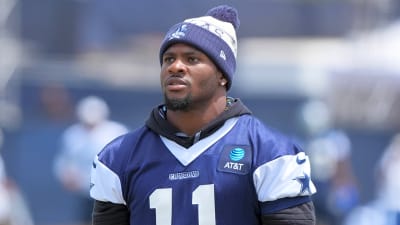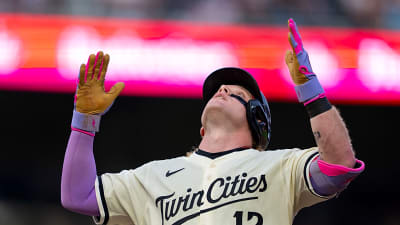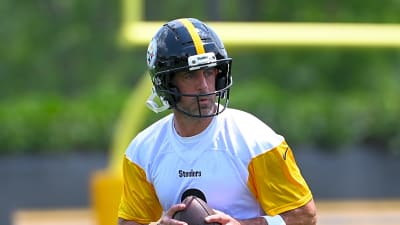
If you look on social media, words that describe the Chicago Cubs fanbase’s general feelings about the team’s trade deadline moves start with “underwhelmed” (probably the most positive descriptor for it), “disappointed” and “frustrated.”
It’s not that the Cubs didn’t acquire real potential contributors, though:
- Willi Castro has played 75 or more games at six different positions through his career, so he’s a versatile defender. He’s also a switch hitter who’s been really strong against lefties in 2025 (131 wRC+). He’s an upgrade to a bench that needed it.
- Michael Soroka doesn’t have great numbers on the surface (like a 4.87 ERA), but his expected stats (like a 3.32 xERA) and strikeout and walks rates of 25.4 percent (72nd percentile) and seven percent (69th percentile), respectively, are encouraging. He could help in the backend of the rotation or in a multi-inning bullpen role.
- Andrew Kittredge adds another veteran right-hander to the bullpen mix. That could be important down the stretch considering the Cubs designated Ryan Pressly for assignment on Thursday. He gets a lot of chase (41.7 percent, according to Baseball Savant). He could be an option in some higher-leverage spots.
- Taylor Rogers is a veteran left-hander who’s posted a 3.28 ERA over 10 seasons (including 2.45 in 2025). He could help against lefty-heavy pockets on deck, as he gives the Cubs another southpaw in the ‘pen.
On their own, the trade deadline moves feel fine (if not better) at the very least. Not all necessarily needle movers, but helpful depth additions that make the team better than it was earlier this week. Those matter over the last third of the season.
The underwhelming/disappointing/frustrating feeling many fans likely had once the dust settled was because that was it. Those were the Cubs’ moves at this year’s trade deadline.
The problem is, this team has a real shot to win big this year. As of Thursday night, FanGraphs gives the Cubs the third-highest odds to make the playoffs (97 percent) and the seventh-highest odds to win the World Series (7.3 percent).
Of course, as we saw in September 2023, odds aren’t certainties. Teams still have to get it done on the field. So regardless of the moves the Cubs made before the trade deadline, winning games the rest of the way is still the most important thing.
But adding good players obviously helps with that. It ultimately just doesn’t feel like the Cubs did enough to take advantage of the position they’ve played themselves into.
The Cubs Made Moves, But Was It Enough?
The Cubs add Willi Castro for two prospects! pic.twitter.com/BGRtaQhmZH
— Just Baseball (@JustBB_Media) July 31, 2025
Third base didn’t feel like the biggest need, but Eugenio Suárez’s bat (36 home runs, 143 wRC+) would’ve taken the offense up another level. It isn’t the end of the world that he didn’t end up in Chicago, though. Castro is actually a pretty nice fit for their needs, as he can work in at third and help spell his new teammates around the field.
The offense is also one of baseball’s best as it stands. If Matt Shaw’s post-All-Star break hot streak (four home runs, 213 wRC+) is the start of a more productive second half, perhaps some combination of him and Castro can be enough at the hot corner.
The pitching staff is where it feels like the Cubs came up short at the trade deadline. Yes, they did bring in three arms. And yes, they could each be solid depth acquisitions (maybe even with potential to be better).
But not adding a no-doubt playoff starter, probably the top priority heading into the deadline, has to feel disappointing. Same goes for not bringing in the kind of bullpen arm who could at least help carry the closer load. Daniel Palencia has been excellent in that role since taking over in mid-May, but he also hasn’t pitched in the postseason before. Acquiring someone to help close games would’ve been a very helpful addition.
A bigger starting pitcher addition felt like a must. Especially when you consider the way the injury bug has hit the rotation this season. Soroka should be a useful back-end starter, and maybe he surprises folks with the Cubs. But the trade deadline passing without one of the bigger starter names seems like a missed opportunity.
The Cubs have acquired Michael Soroka! pic.twitter.com/XhhhuHohcB
— Just Baseball (@JustBB_Media) July 31, 2025
Here’s how president of baseball operations Jed Hoyer described that market to reporters, including the Chicago Tribune, Thursday evening:
“The way I would say it: Very few rental starters, effectively no starters that had one year of control after this, and then the controllable starters, none of those guys changed hands. Obviously we didn’t acquire them, and no one else did either. The asking price we felt like was something that we couldn’t do to the future. … In the end, the asking price on those guys would have been so detrimental to our future that we decided against it.”
He’s not wrong. Bigger-name, controllable starters didn’t move around. Sandy Alcantara and Edward Cabrera are still with the Miami Marlins. Joe Ryan didn’t leave the Minnesota Twins. The Washington Nationals didn’t deal MacKenzie Gore. The Pittsburgh Pirates hung onto Mitch Keller. There wasn’t much movement for higher-profile starters on expiring deals, either.
The asking prices were apparently high for upper-level rotation pieces around the league. Hoyer and the Cubs chose not to go that route and kept their top prospects. Still, this seemed like the deadline to be bold. Hoyer was bold in the offseason when he acquired Kyle Tucker, who may only be around this rest of this season.
Hoyer’s front office isn’t one that necessarily likes all-in moves, though. The philosophy has always been about winning while keeping an eye on the future. Not parting with top prospects for returns that didn’t feel worth it would align into that.
But this team entered Thursday a game back of the best record in baseball, featuring a star bat (who didn’t come at a cheap cost) under control for only 2025. Years ago, Theo Epstein said, “Every opportunity to win is sacred.” This year is certainly an “opportunity to win” given the position this team is in.
With all that in mind, this felt like the trade deadline to find a way to maximize this season’s potential. That just didn’t really happen.
The Cubs are no longer in first place in their division. Other National League contenders, like the New York Mets, San Diego Padres, and Philadelphia Phillies, made rather aggressive moves before the deadline. Chicago brought in players who can contribute to a playoff run, but they didn’t bring in a haul at the level of those other teams. And they didn’t take the kind of big swing fans were hoping for.
Whether or not that hurts them later this year is something everyone will be following.
More must-reads:
- Rob Manfred downplays salary cap dispute with Bryce Harper
- Pirates complete stunning collapse in 33-run barnburner
- The '250-strikeout MLB seasons' quiz
Breaking News
Trending News
Customize Your Newsletter
 +
+
Get the latest news and rumors, customized to your favorite sports and teams. Emailed daily. Always free!








